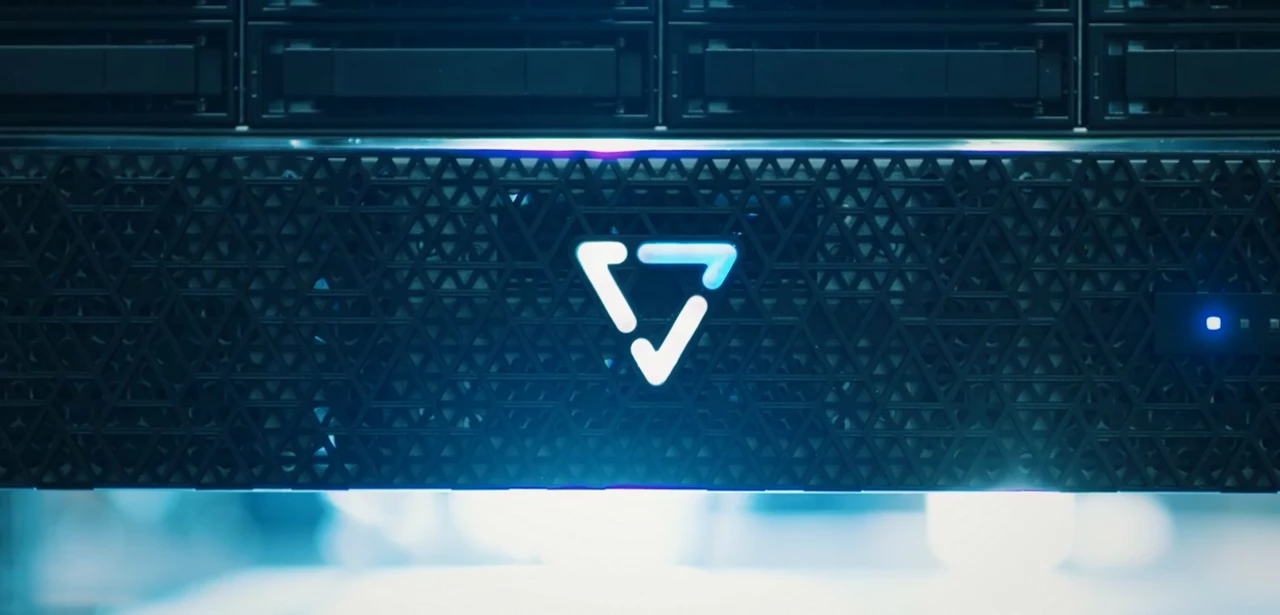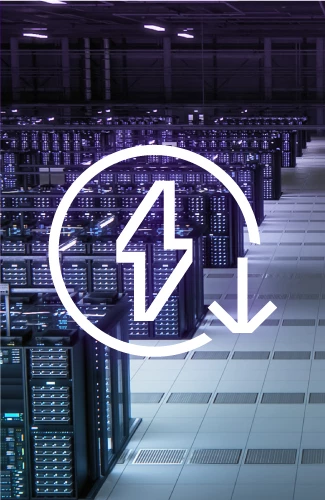VAST Data Leverages the Value of Solidigm SSDs to Redefine Storage
Customers want solutions that are fast but not expensive. Unfortunately, when it comes to storage, traditional solutions force a choice. Organizations typically have to choose multiple storage systems to meet the speed and efficiency requirements of different data and applications, based on their perceived importance to the business.

When VAST Data and Solidigm partnered to deliver the only data platform that can match the ambition of AI-era companies, the problem they needed to solve meant building a new type of storage system that could support the needs of new applications, such as analytics, AI, machine learning, and deep learning. This will allow organizations to unlock the value of their data to:
- Make better decisions
- Innovate
- Solve problems
The problem with traditional data storage
The fastest systems, which tend to be small and extremely expensive, are usually reserved for only the most valuable data. The many tiers of storage that follow, which grow in capacity and shrink in price and performance, are used to support everything else. The problem is this tiering is artificial.
There is value in all data - game-changing information can be anywhere. Organizations increasingly rely on artificial intelligence (AI) applications to run their business. These applications work best when they have access to all an organization’s data. The more data that’s quickly and easily accessible, the better the business can compete and succeed.
Fast, affordable access to data on a virtually limitless scale is no longer a choice, it’s a business necessity. To accomplish this, a new approach to storage was needed.
VAST enables customers to extract value from large quantities of data, in addition to the traditional value-rich data.
“For example, in the past,” says Marks, “customers put their archive on something cheap and deep with spinning discs that allowed them to satisfy Sarbanes-Oxley, which required them to keep the data for 10 years, but nothing else. Compliance was the only benefit derived from that system because it was not fast enough to be able search the data to get anything out of it. Today, if you put that data on VAST, it can become a data lake that can be mined and analyzed with deep learning and machine learning tools to create real business value. You can find things in your data that you didn’t even know existed because you can uncover patterns that only emerge with years-worth of data. For instance, you may see Mary buys a new Christmas tree holder every three years – now you can send her an offer in the right year to make sure she buys it from you. With fast affordable storage these things, which were impossible or simply too expensive to find in the past, can now be used to inform business planning, decisions, and results.”
VAST: Delivering universal storage
VAST created a data platform that could match the ambition and needs of AI-era companies, finally realizing the dream of all-flash for all an organization’s data. VAST built a universal datastore, powered by an all-new scale-out architecture, from the ground up, to eliminate the need for data tiers and tradeoffs.
VAST made sure everything within the platform was optimized to be as fast and efficient as possible. To help them realize their vision, they pulled through the value of Solidigm’s high-density quad-level cell (QLC) solid state drives (SSDs), which offer greater efficiency, resiliency, ease of integration, and lower total cost of ownership over traditional SSDs.
The VAST platform ensures organizations have storage that is cheap enough and big enough to handle all an organization’s data, while fast enough to ensure it can all be used by all an organization’s tools and AI-based applications (e.g., analytics, machine learning, deep learning). As a result, organizations can use a single system to satisfy the needs of all their applications and unlock the full intelligence and utility of all their data for better decisions, insights, and innovations.
VAST with Solidigm: Changing the storage paradigm
To deliver a universal storage system, which no longer forces organizations to make a choice between performance and capacity, VAST pulls through the value of Solidigm’s high-density QLC non-volatile memory express (NVMe) SSDs. Solidigm’s QLC SSDs easily address the needs of all an organization’s read-intensive AI-based workloads, which is extremely difficult for traditional storage systems to do at a price point that makes sense for the business.
Most of these workloads aren’t particularly sensitive to latency, but they are bandwidth intensive. For example, facial recognition needs to read the whole photograph before it can use and analyze it. The Solidigm QLC SSDs provide all the performance, capacity, and endurance needed to support the data demands of these AI-based applications, while increasing the overall efficiency of the organization’s storage infrastructure.
Solidigm helps us meet the requirements of a wider range of use cases and applications at an attractive price point for the enterprise.
Massive scalability
VAST built its platform to support the needs of all an organization’s applications, automating load balancing and many other data management capabilities to ensure traffic is handled in the most efficient and scalable way. VAST’s Disaggregated, Shared Everything (DASE) architecture provides virtually limitless scale and performance to meet the needs of AI workloads, today and in the future.
“Having multiple SSD sizes lets [VAST] address a wider range of performance-capacity points. We have customers who have high performance density requirements who get the smaller SSDs and customers who are using the platform as a backup target where we are exceeding their performance requirements,” says Marks.
The VAST systems start at over 300TB of flash storage – they lean on multiple Solidigm QLC SSDs to help them provide the capacity that different customers require. Solidigm’s use of NVMe storage technology makes the design of the system highly scalable to meet the needs of AI-era applications, today and in the future.
High performance
By leaning into the qualities of Flash and building a platform from the ground up for performance and endurance, VAST customers enjoy unparalleled uptime and reliability. The VAST platform does a lot of automation and I/O shaping to make it as fast and efficient as possible. For example, it manages the endurance of the QLC Flash - knowing how big the blocks should be to ensure the SSD doesn’t have to waste any endurance writing partial pages or ‘collecting garbage’ internally– so customers don’t have to tune for different workloads and can focus on AI-driven outcomes. Traffic is sent directly to Solidigm’s QLC SSDs, which have also been architected for optimal data and read-intensive workload performance.
Improved TCO across a range of configurations
The VAST platform was designed to provide a single affordable system that organizations could use to satisfy the needs of all their data storage requirements, from their enterprise applications to their archives. To accomplish this, they focused on delivering what organizations actually use and need, eliminating extra, expensive features that add unnecessary bloat and drag on traditional systems.
Workloads sent to the QLC SSDs benefit from Solidigm’s streamlined design, which further improves the total cost of ownership of the platform. Across a range of configurations, Solidigm customers can realize up to 2PB1 [1] of storage in a 1U server. Solidigm’s extremely small form factor, with its compact footprint of only 2” x 5.25”, minimizes the real estate, power, and cooling required, allowing VAST to push the boundaries and build beyond typical storage horizons.
What’s next
For more information on how the Solidigm D5-P5336 can provide customized data storage solutions to support your cutting-edge technology requirements, please read or download the product brief.
[1] Max potential 1U storage density: Industry-leading 61.44TB capacity enables nearly 2PB of storage in a 1U server:1U based on 32x E1.L front load drive bays x 61.44TB E1.L D5-P5336 = 1.966PB. Max 1U front load based VSAT configuration.


